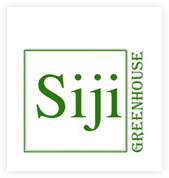Designing with Pots
Planter containers play an important role in providing the foundation for the display and contribute enormously to its appearance. Some pots are a work of art in their own right, yet care should be taken to select the one most appropriate for any given function.
The most common materials are:
Synthetic, Metallic, Terracotta, Ceramic, Natural
The strengths and weaknesses of each category are outlined in the above link to enable a more informed selection to be made. The pictures are for illustrative purposes to support the descriptions, they are not fully representative of all the kinds available within each category. They do indicate quite clearly, however, the diversity within each group.
Taking into account the enormous range of planters available, an early process of elimination based on the visual characteristics of the planter its scale and function can significantly reduce the complexity of choice later on.
Once familiar with the descriptions of the characteristics in the linked pages, answers to the above fundamental questions will be quite straightforward, indicating what type of material or materials will be most appropriate for any given setting. Undoubtedly in some cases, more than one category could be suitable, in which case personal preference and aesthetic criteria will kick into the selection process. At the end of the day though, appearance and personal preference are likely to be the final overriding factor, however, complex the issue.
In general, if the planter fulfills the requirements dictated by the above criteria, an attractive result will be achieved which will also look ‘right’ and appropriate, enhancing the surroundings and adding considerably to the overall ambience.
General Comments
Material
Take your lead from the surroundings. Select a material that is already present in the setting if possible. It can, but need not be a major element, but noticeable (a subtle complement can work very well).
If a match is not what is wanted, or too difficult to achieve, consider a contrast. (but beware, contrasts of ‘rustic’ in a modern ‘polished’ setting or vice versa do not work well). Appropriate contrasts can work very well, however, when there is an underlying link tying the planter to its surroundings e.g. colour, texture and/or shape.
Colour
Strong, uniform, brightly coloured planters can be difficult to match to an existing colour in the proposed setting. If you are only marginally ‘out’, it can clash with, rather than complement its surroundings. Care should, therefore, be exercised when choosing planters to ‘match’ in this way. Perhaps a contrast would work better. If the colour is a key element in the concept, however, the risk can be significantly reduced by selecting a pot with ‘gradated’ colour. Most ceramic pots, for example, are not a totally uniform colour, there is a degree of variation which allows for some flexibility in selection. The precise colour wanted, could be embedded in the glaze which will undoubtedly vary in thickness over the pot surface. Similarly, some synthetic planters have ‘degrees’ of colour over the surface of the same pot.
Pots made with natural material rarely clash with other colours, they may, however (but not necessarily) be inappropriate in a very modern ‘polished’ environment.
‘Apparent’ colour contrasts can work well, but the planter colour should be represented somewhere in its setting, even if only in a small way, a less dominant colour element in a carpet, curtain or furnishing detail for example.
Texture
The criteria for selecting texture, combines the guidelines above for material and colour.
Generally, the more ‘polished’ the planter finish, the more appropriate it is for a modern setting.
Scale
The scale of the container should be in balance with the scale of the proposed plant. This is to satisfy both the visual harmony and to ensure that there is sufficient volume in the container to support and sustain a healthy plant.

